It has never been easy to fly with kids. In the days before custom seat belt attachments and designated child seats, parents used to hang cradles for babies above their seats.
Intriguing vintage photos from the 1950s showcase “skycots” attached to overhead luggage bins.
Over time, ensuring child safety during flights has become increasingly prioritized, leading to the widespread use of child safety seats on airplanes.
The introduction of “sky cots”
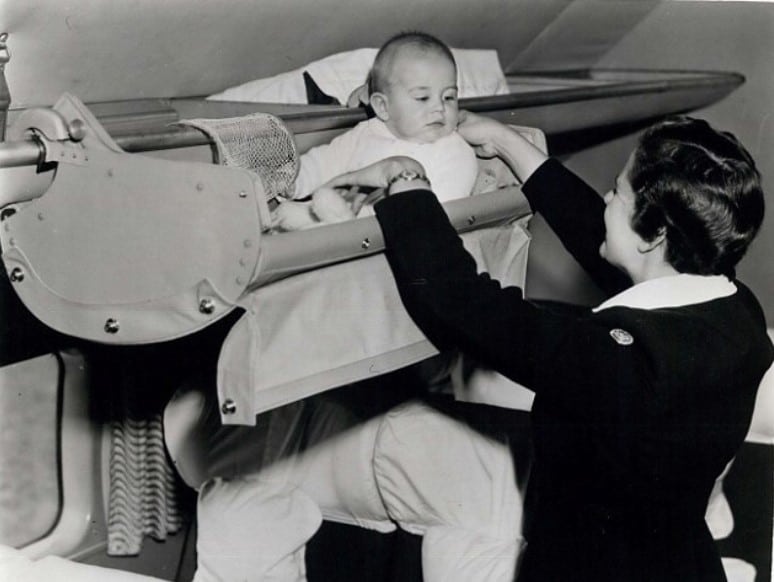
In the early days of commercial air travel, safety measures focused mainly on adult passengers, with minimal consideration for infants. Parents often held their babies on their laps, using their own arms for protection since dedicated baby safety seats were not yet available.
Photos from the 1950s reveal well-dressed families on board with babies. In these images, infants were placed in sky cots attached to the overhead bins and were cared for by flight attendants.

This vintage photograph illustrates how British Overseas Airways Corporation (BOAC), British Airways’ predecessor, prioritized passenger comfort.
To ensure a pleasant travel experience for families, they introduced hammock-like “skycots” for infants on long-distance flights.
These innovative cots were designed to be attached to the luggage rack, allowing babies to sleep safely and comfortably without the risk of falling out.
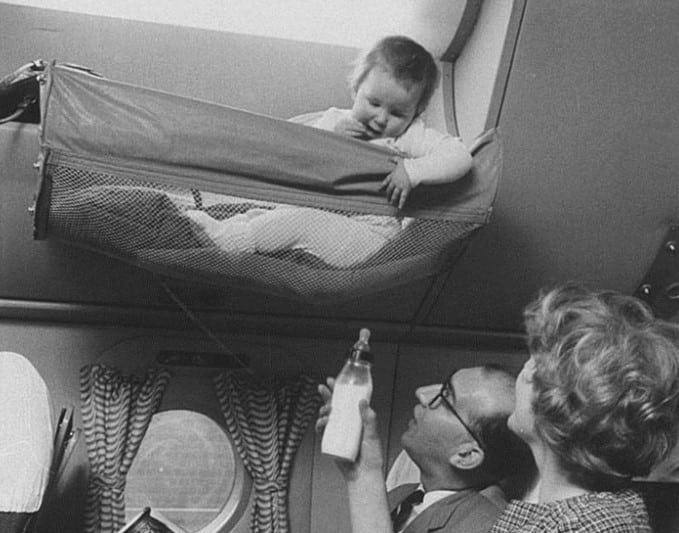
Despite this convenience, parents were required to hold their infants during take-off and landing—a practice that remains in place today.
Unpleasant experiences on flights with children
Despite the nostalgic images of leisurely journeys, the reality onboard was quite different. Tim Hinds, who first flew on a DC3 in the 1960s, recalls the noisy ride and turbulence.
He described. “When we took off I remember the tail would swerve back and forth until all three wheels were off the ground, it was noisy and since it wasn’t pressurized we had to stay below 10,000ft.”
Later, he experienced a DC6, which could fly higher thanks to pressurization, but it was still incredibly loud.
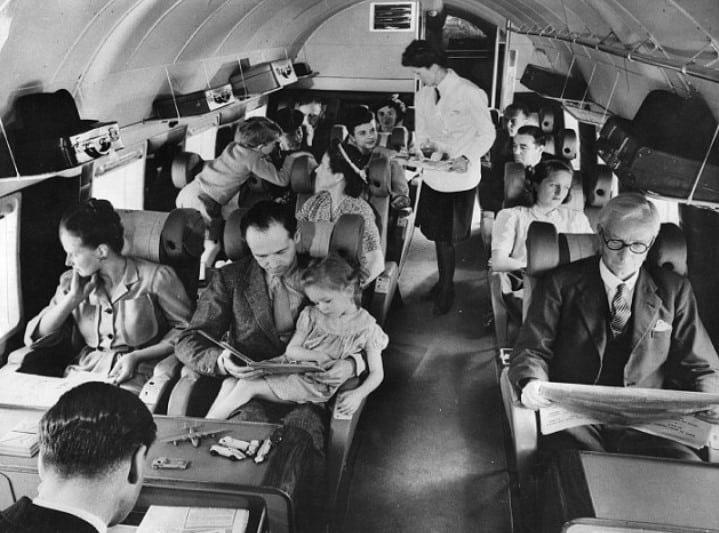
Robert Moutal also remembered the noise and increased turbulence of planes from that era, noting they “shook more.”
Meanwhile, Andy Kerr, a Quora user, reminisced about flying on large planes like the 747 as a child, describing the dramatic takeoffs.
“Takeoff was something akin to a rocket launch. Once you turned onto the runway, there was a full stop, and they started spooling up the engines. This took a lot longer, nearly a minute, just building up the anticipation and dread”, he said.
“They weren’t quiet, either — they just kept getting faster and higher and louder until there was an almighty roar that shook the whole plane. The brakes released with a bang, and you slammed back into your seat as the plane leapt forward down the runway. It was awe-inspiring, and visceral, better than any roller coaster.”
These memories paint a vivid picture of the true experience of flying in the so-called golden age of aviation.
The use of child safety seats on airplanes
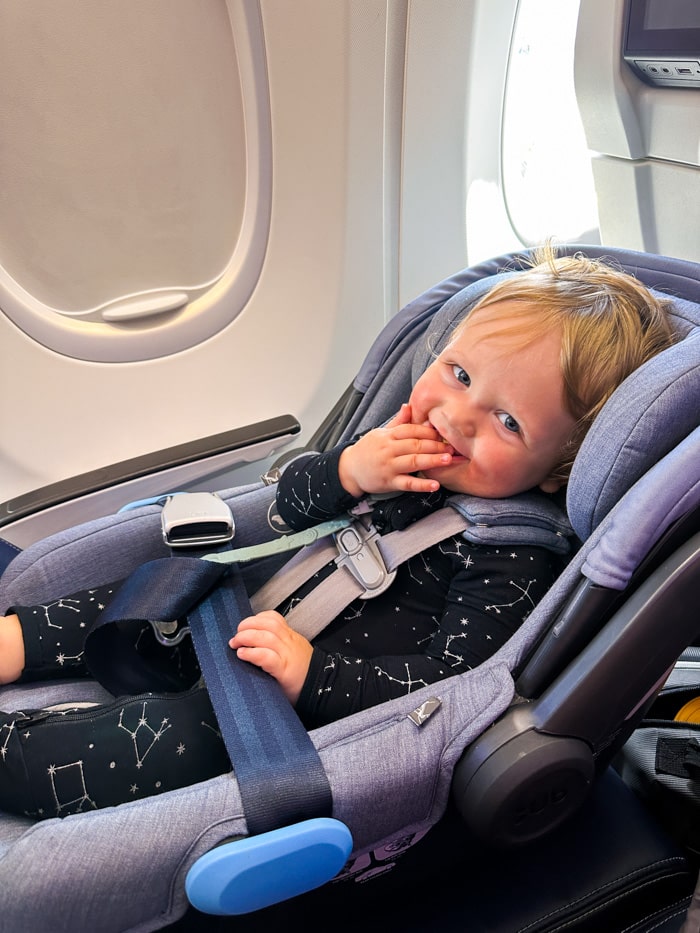
As the aviation industry advanced in the mid-20th century, air travel became common in the 70s and 80s. With this progress, concerns about infant safety on airplanes began to concern.
This era marked the beginning of recognizing the need for specialized restraints for very young travelers, marking a shift towards safer air travel for babies.
During this period, some airlines and regulatory bodies started to recommend the use of child safety seats. They understood the importance of providing infants with secure, designated spaces during flights.
This was the first step in addressing the unique safety needs of young passengers and paved the way for future improvements.
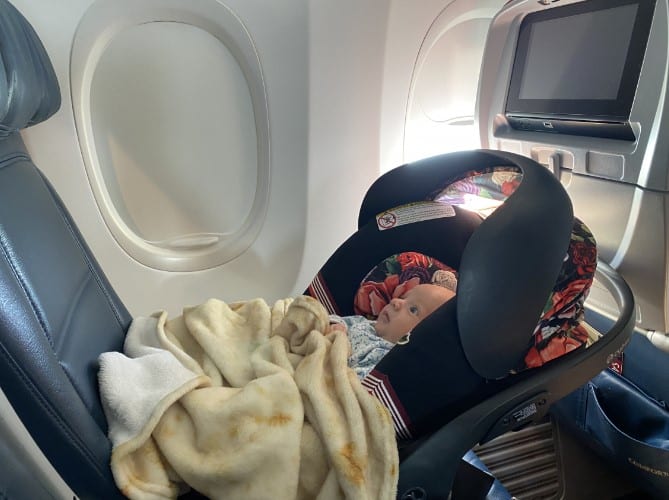
During the late 1980s and 1990s, a significant leap was made in promoting the use of child safety seats on airplanes.
Studies conducted by researchers highlighted the effectiveness of these seats, showing how they provide crucial protection for infants and young children during turbulence and emergencies.
The Federal Aviation Administration (FAA) in the United States has specific criteria for child safety seats (called CRSs) used on airplanes to ensure the safety of very young passengers. These criteria include:
Labeling: The CRS must have a label or marking that certifies it meets federal safety standards. For U.S.-manufactured seats, the label typically reads, “This restraint is certified for use in motor vehicles and aircraft.”
Installation: The CRS must be installed according to the manufacturer’s instructions, which include securing it in the appropriate forward- or aft-facing direction based on the child’s size.
Harness Requirements: For children up to 40 pounds, the FAA recommends using a harnessed car seat or a child safety restraint system. This setup provides the safest experience during all phases of flight, including turbulence.

